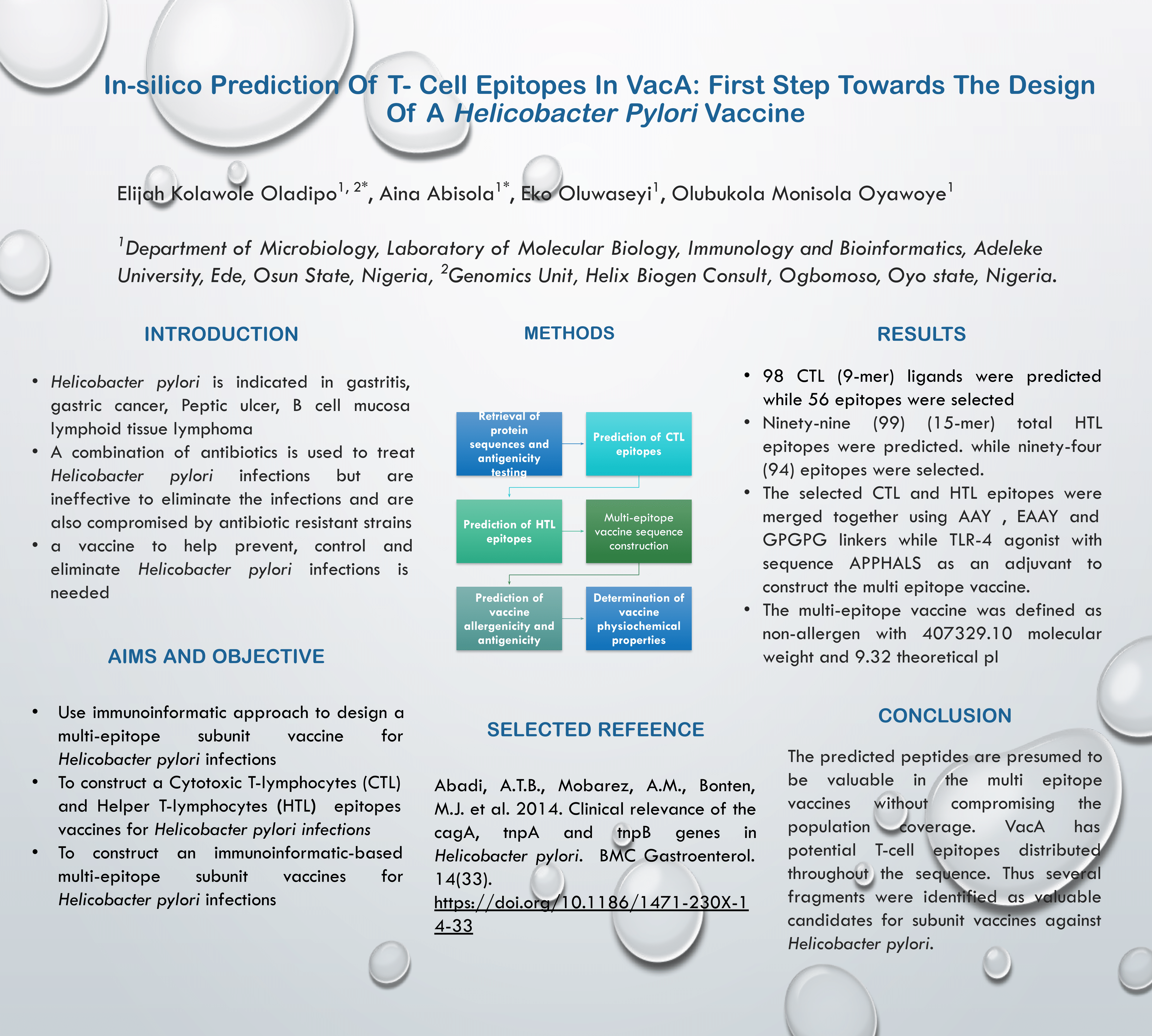Conference 2021 Poster Presentation
Project title
In Silico Prediction of T-Cell Epitopes for Onchocerca volvulus Vaccine
Authors and Affiliations
Elijah Kolawole Oladipo1, 2*, Eko Oluwaseyi1*, Aina Abisola1, Olubukola Monisola Oyawoye1
1. Department of Microbiology, Laboratory of Molecular Biology, Immunology and Bioinformatics, Adeleke University, Ede, Osun State, Nigeria
2. Genomics Unit, Helix Biogen Consult, Ogbomoso, Oyo state, Nigeria
Abstract
Onchocerca volvulus a parasitic nematode responsible for Human onchocerciasis (river blindness). It is transmitted by repeated bites of infected Simulium dark flies. Onchocerciasis is a parasitic disease with high financial weight especially in sub-saharan Africa. The end plan for this illness has confronted various difficulties. A multi-epitope prophylactic/remedial vaccine focusing on the infective L3 and microfilaria phases of the parasite’s life cycle would be significant to accomplish the present end objective. This work is an endeavor to react to the requirement for novel instruments to help accomplish the onchocerciasis disposal objective. Immunity to O. volvulus mf and L3 is associated with B-cell and T-cell reactions addition to antibody-dependent cellular cytotoxicity (ADCC) mechanisms. Five (5) Onchocerca volvulus protein sequences were retrieved from wormbase.org in FASTA format after which their antigenicity was predicted using the ANTIGENpro database. The protein sequences selected obtained probability for antigenicity score of ≥0.8. The sequences that met the antigenicity score of ≥0.8 were subjected to NETCTL AND IEDB MCH II server to predict CTL and HTL epitopes respectively and the comb scores, length and immunogenicity scores and Percentile ranking are considered. A total of 49 CTL epitopes with 9mer each were retrieved. The vaccine candidate of total 16 CTLs and 15 HTLs having high scoring epitopes from the above immunoinformatics predictions were sequentially fused together utilizing the appropriate linkers to create the long chain of the multi epitope vaccine protein. The linker AAY, GPGPG were used to connect the intra-CTLs, and intra-HTLs epitopes while TLR-4 agonist with sequence APPHALS as an adjuvant to construct the multi epitope vaccine. The predicted peptides are presumed to be valuable in the multi epitope vaccines without compromising the population coverage. Several fragments were identified as valuable candidates for subunit vaccines against Onchocerca volvulus.

